A Turbulent Country
Szöveg: Béla Szabó | 2011. január 18. 15:15Unparalleled natural resources and immense underdevelopment; tribal structures and efforts towards democratization; drug production, decades of warfare, terrorism and reconstruction: this is Afghanistan. The Hungarian Defence Forces have been participating in peace enforcement and reconstruction tasks in the country for seven years with a 500-strong force – the largest HDF contingent deployed abroad.
Following the terrorist attacks on New York and Washington on September 11, 2001, it became obvious that global peace and security must face the danger of terrorism above all. In its Resolution No. 1368, the UN Security Council stated on September 12, 2001 that the terrorist attacks should be considered a threat to international peace and security.
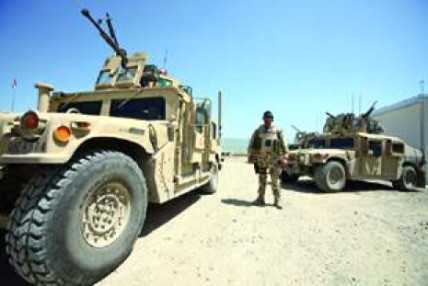
In response to the terror attacks, the United States of America launched Operation Enduring Freedom in Afghanistan in October 2001 to wage a war on terror on an international scale, as intelligence sources had reported that the Taliban regime of Afghanistan had actively supported terrorist groups both directly and indirectly.
Concurrent with this development, the United Nations swung into action with the aim of preparing to create a new, democratic Afghan state after the liberation of the country from the rule of the Taliban. Accordingly, on November 14, 2001, the UN Security Council adopted a resolution on the establishment of a transitional Afghan administration, which was to be replaced six months later with an officially recognized interim government. In order to implement the resolution, the UN called on its member states to support the security measures in areas liberated from Taliban rule.
The term “ISAF" appeared for the first time on December 6, 2001 at the Bonn Conference. On December 20, 2001, the UN Security Council adopted Resolution No. 1386 on the establishment of an International Security Assistance Force (ISAF), and on February 10, 2002 ISAF officially commenced its mission in Afghanistan. ISAF has been running as a NATO-led mission since August 11, 2003. Currently more than 150,000 ISAF troops from 47 troop contributing nations (TCN) are deployed in the Asian country. ISAF has been operating under the command of Gen. David Petraeus (USA) since June 2010.
The first Hungarian troops
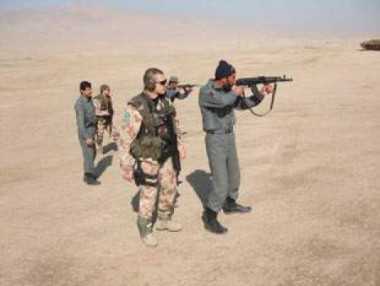
The role of the Hungarian Defence Forces in ISAF, Afghanistan expanded further in 2004. While on January 1, 2004 Hungary had only three officers posted to the area of operations (AO) to hold individual positions, by the end of the year the Hungarian contingent numbered above 40. In mid-2004 there was a significant increase both in troop levels and the quality of Hungarian participation. Having been authorized by the government, the Hungarian Defence Forces effected the largest troop boost in their history in the Afghan theater of war. On August 4, 2004, a 132-strong unit, the HDF Light Infantry Company (LIC), deployed as a unit assigned to the Norway-led ISAF Battle Group 3 of the Kabul Multinational Brigade. The main responsibility of the Hungarian company was to carry out security tasks in Kabul and the related areas of responsibility (AOR). The Hungarian troops were carrying out their most dangerous mission while they went on patrols in the huge city, operated vehicle checkpoints (VCP), provided convoy and VIP escorts, joined the Afghan National Security Forces (ANSF) to conduct operations and carried out information gathering activities (IGA) as well as CIMIC (Civil–Military Cooperation) tasks.
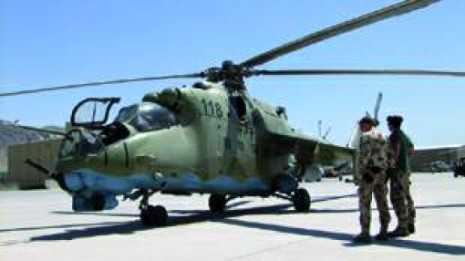
The Hungarian soldiers were also busy in their (rather limited) off duty period. In Kabul they found the grave of Aurél Stein, a Hungarian orientalist and famous researcher of Central Asia , and renovated it at their own expense and provided for its long-term care and protection. In recognition of their historical research and preserving of tradition, the Hungarian Academy of Sciences awarded a streamer for the unit colors of the HDF 34th Bercsényi László Reconnaissance Battalion (now Special Forces Battalion), the unit from which most of the light infantry company’s personnel was drawn. The HDF LIC completed its mission in Kabul on September 5, 2006. Following the redeployment of its designated personnel and equipment to the HUN PRT camp which was being taken over from the Dutch forces in Pol-e Khomri in north Afghanistan, in early October 2006 the company was withdrawn from the area of operations. At the same time three Hungarian staff officers were also rotated out – they had been posted to the Italy-led Provincial Reconstruction Team in Herat, the centre of the western region.
Assuming the lead nation role
The next remarkable date in the mission of the Hungarian Defence Forces in ISAF, Afghanistan is October 1, 2006. On that day, Hungary was requested to take over as lead nation the PRT operated by the Dutch armed forces in Pol-e Khomri, Baghlan Province. To understand the PRT concept, one must know that concurrent with the launch of operations aimed at fighting terrorism, all TCNs were well aware that that the “Afghan issue" cannot be resolved by military means alone. (Present-day developments have proved them right.) In order to promote the return to normality in that country, which is based on a tribal culture and is extremely underdeveloped as regards its economy and infrastructure, basic living and working conditions for the population must be created. This is essential for two reasons. On the one hand, it is important to make sure that the people of the war-torn country living in decades-long poverty realize that the military operations are not directed against them. On the other hand, it is important to win the hearts and minds of the population by assuring the locals that the NATO forces are not a new wave of invaders but rather they are there to help them build their own and their children’s future.

The Hungarian PRTs have also operated on this principle. In the past four years, they have implemented hundreds of projects, including the construction and renovation of roads, bridges, schools, hospitals and flood protection dams, as well as contributing to the development of public administration. Unfortunately, due to the gradually deteriorating security situation, it has of late become increasingly difficult to continue their duties. As a result of NATO’s increasing operational tempo, insurgents have started regrouping from the southern provinces to the northern territories, which so far have been considered more secure areas. The last 12–18 months has seen a growing number of suicide attacks and ambushes that are carried out in increasingly organized ways in Baghlan Province, which had been considered secure earlier. Four Hungarian service members have been killed in action in these attacks. Thanks to the projects implemented during the first two years, Hungarian troops were very popular throughout the province. These days, however, due to the growing terror threat, the tide seems to be turning. The continual attacks carried out by insurgents on an almost daily basis make it increasingly difficult for the HUN PRT staff to reach the distant villages of the province, so the pace of development has slowed down – and due to the threats made by the Taliban, some of the population (for reasons related to fear or other factors) do not dare to cooperate with the PRT as they previously used to . All these developments have led the political and military leadership of Hungary to reconsider whether it is worth running the PRT under the old scheme, and whether it would be better to refocus their efforts and funding on the training of the ANSF in the future. Having said that, presently the ninth rotation of the HUN PRT is being deployed in Afghanistan, and they are making every effort to carry out their core duties in the face of all these hindrances. There are 33 Montenegrin, five Croatian and two Albanian troops in the HUN PRT aiding the work of the Hungarian soldiers, which brings the strength of the contingent to 271. The HUN PRT commander is Col. Péter Lippai, the chief of staff of the HDF 5th Bocskai István Infantry Brigade.
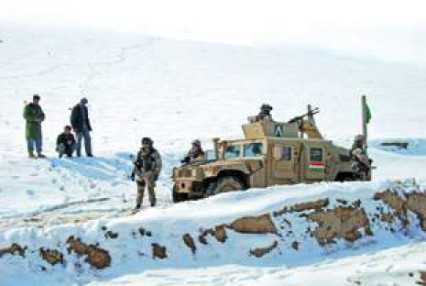
Training and leadership
When the ISAF mission was launched it was clear to all participants that besides the counter-insurgency (COIN) operations and the reconstruction tasks, they would have to prepare for an exit strategy as well. The implementation of this strategy presupposes that the ANSF units (the Afghan army and police) are capable of guaranteeing the security and sovereignty of the state on their own after the pullout of the Coalition forces. This is why the OMLTs (Operational Mentoring and Liaison Teams) have been set up. The core mission of these teams is to train the personnel of the Afghan National Army (ANA) and the Afghan National Police (ANP) and assist them in conducting their operations in the first period.
The Hungarian Defence Forces have been participating in the OMLT mission since 2007, and these days the fifth rotation of Hungarian troops are doing their tour of duty at the OMLT forward operating base (FOB) at Khilagay only 20 kilometres from Pol-e Khomri in Baghlan Province. They have been mentoring an ANA Kandak (battalion) in cooperation with the Ohio National Guard since the first day of their deployment. The rotations of the US and Hungarian troops first conduct a Mission Rehearsal Training (MRT) together in Hungary, then deploy to the AO where they are responsible for training the trainers. In other words, they give assistance to the officers and non-commissioned officers of the Afghan battalion as to how to train their own troops, and they also give them operational advice. They join them in combat missions as well, as the ANA battalion, concurrent with its training, regularly participates in COIN operations in which they receive support from the Hungarian and US instructors. The Hungarian troops in the OMLT rotations have engaged the enemy in a number of firefights whose intensity is shown by the fact that in some of these battles they had to request close air support (CAS) from A–10 aircraft of the US Air Force. Led by Hungary, the current 60-strong OMLT contingent includes 30 or so Hungarian and 30 US troops who deploy in six-month rotations and operate round the clock as members of the OMLT are allowed to take their rest and recuperation (R&R) leave only on completion of their tour duty abroad. The OMLT’s activity is one of the key elements in the participation of the Hungarian Defence Forces in high-intensity operations. In that respect, it is similar to the role of the HDF Special Operations Task Units (SOTU).
In special positions
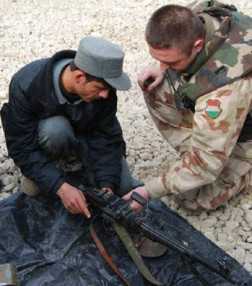
As regards Hungary’s further new commitments, in April 2010, a 17-man HDF Combat Service Support (Logistic) Mentor Team commenced its tour of duty in Kabul, where its members are teaming up with German and Croatian colleagues to assist the combat service support (CSS) (logistic) school of the Afghan National Army. Another mentor team tasked with providing assistance to the engineer school of the ANA also deployed in the region in 2010.
The HDF Air Force has also been contributing to the mission, since a 10-man HDF Air Mentor Team (HDF AMT) deployed to the Kabul International Airport (KAIA) in May 2010. The HDF AMT is tasked with providing training the Mi–35 attack helicopter crews of the ANA air force (AANAF). Given the positive feedback, NATO recently requested the HDF to train Mi–17 transport helicopter crews as well in 2011.
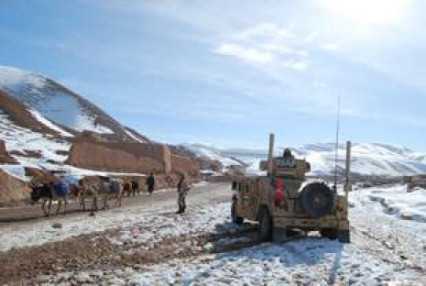
Due to the growing number of the tasks just mentioned, last year a logistic support unit (the official designation is the National Support Element) also deployed to Afghanistan. These days this nearly 500-strong Hungarian contingent is active in places like Mazar-e Sharif, Pol-e Khomri, Khilagay, Kabul and the central region of the country. Nowadays the daily organization of replenishments, the transport of personnel to Hungary and back to Afghanistan and in-theater transportation (routing, plans for loading, obtaining the necessary permits etc.) all requires the presence of a team of logisticians. They perform air transportation tasks using the NATO airlift or the HDF’s own or leased An–26s and the NATO C–17 aircraft of the Heavy Airlift Wing (HAW) operating from Pápa Air Base, Hungary. The usual airport of disembarkation (APOD) is Mazar-e Sharif, from where the supplies are transported to various garrisons by road. Assembling and securing of “convoys on the ground" and ensuring that they reach their destination on roads exposed to frequent attacks constitute a brilliant logistic feat in themselves.
Our allies in NATO highly appreciate our participation in ISAF, Afghanistan, which is reflected in the fact that in September 2010, the Hungarian Defence Forces took command of Kabul International Airport (KAIA) for the second time. The duties of the 80-odd HDF personnel at KAIA cover practically the full spectrum of tasks involved in the control and management of the airport, ranging from logistic tasks to EOD support and Force Protection duties. To illustrate the variety of roles, let it suffice to say that even on a “most ordinary weekday", the volume of air traffic at KAIA is comparable to that of Ferihegy Airport, Budapest. Moreover, the Hungarian staff is also tasked with providing accommodation, catering and security on a daily basis for thousands of co-located units and guests in transit.
Do it yourself, Sir…
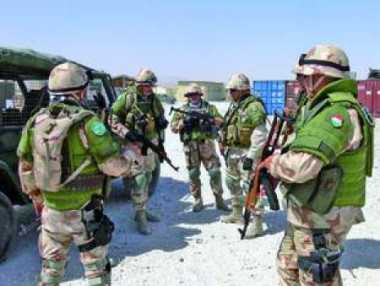
Photo: Dévényi Veronika and archiv